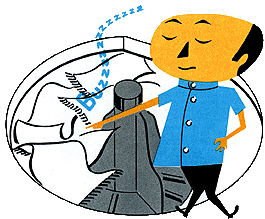|
Thread Number: 82951
/ Tag: Vintage Automatic Washers
POD 5-11-2020 WH 1958 Speed Dryer |
[Down to Last] |

|
| Post# 1072026 , Reply# 1 5/11/2020 at 20:50 (1,537 days old) by jeb (Mansfield Ohiio) | ||
|
Maytag used to advertise the "gray Ghost" wringer washers could be bought with a gasoline engine to use now and when "current" came to your area you could switch to an electric motor. | ||
| Post# 1072285 , Reply# 4 5/13/2020 at 10:19 (1,535 days old) by kd12 (Arkansas) | ||
|
Tom, thanks for the explanation on that. Makes sense now. | ||
Post# 1072298 , Reply# 5 5/13/2020 at 11:56 (1,535 days old) by Launderess  (Quiet Please, There´s a Lady on Stage) (Quiet Please, There´s a Lady on Stage) |
||

Many early electric appliances with heating capabilities (irons, dryers, etc...) did not have thermostats and would simply continue heating long as they were turned on/plugged into outlet.
While this obviously wasted electricity it also was extremely dangerous. Irons scorched and or burned fabrics not to mention started fires. Early dryers already known for high heat (better to bake all that remaining water out of laundry that was poorly extracted either by machine or wringers) could also scorch fabrics and or burn things down under certain conditions, and yes used more power than they should. Idea of appliances that turned themselves off after desired temperature was reached, or in case of laundry was dry meant Her Indoors didn't have to spend time hovering over. Just like today where virtually all modern dryers have moisture sensors one can load the things, choose a cycle, hit start then go about one's business. Public dryers at laundromats waste huge amounts of energy because people put far too much money in and dryer runs far longer than it needs to in consequence. Since such dryers tend to run hot things left in there longer than they should emerge shrunk, and baked to death. Various other appliance makers offered "miser" or "eye" appliances indicating they were frugal with electric usage because they shut themselves down (or least turned off/down heat) under certain conditions and or time. | ||
Post# 1072399 , Reply# 7 5/13/2020 at 22:33 (1,535 days old) by combo52  (50 Year Repair Tech Beltsville,Md) (50 Year Repair Tech Beltsville,Md) |
||
Early Clothes Dryers Were really about as efficient as dryers are today, and dryers were never sold for home use without thermostats and either timers or other automatic controls to shut them off.
When a dryer runs longer than needed to dry clothing it only gets so hot, it should not damage clothing, also a dryer running with dry clothes in it only uses about 1/4 the amount of heating power as it does when it has wet clothes in it, still not ideal but they do not destroy clothing if used correctly.
John L. | ||
Post# 1072638 , Reply# 8 5/15/2020 at 09:09 (1,533 days old) by turquoisedude  (.) (.) |
||
 Not to hijack this thread but lookee what I got on Wednesday!!
View Full Size
| ||
| Post# 1072656 , Reply# 9 5/15/2020 at 10:57 (1,533 days old) by Tomturbomatic (Beltsville, MD) | ||
|
Congrtulations!
Not to be all nationalistic about it, but is it a Westinghouse made in Canada or a Westinghouse made in the United States of America? | ||
| Post# 1072672 , Reply# 10 5/15/2020 at 13:13 (1,533 days old) by Maytag85 (Sean A806) | ||
 | ||
Post# 1072683 , Reply# 11 5/15/2020 at 14:46 (1,533 days old) by DADoES  (TX, U.S. of A.) (TX, U.S. of A.) |
||
 Not quite exactly. My dryer (which is 10yo) targets 127°F for low temp. Checking the temp at the exhaust hood (with no clothes) with an instant-read thermoment, it read varying between ~108°F and ~130°F. It has two heating elements, only the lower-wattage (1,400) element operates on low to reduce the heat-input blast. | ||
| Post# 1072686 , Reply# 12 5/15/2020 at 15:49 (1,533 days old) by Maytag85 (Sean A806) | ||
 | ||
Post# 1072790 , Reply# 14 5/16/2020 at 06:38 (1,532 days old) by turquoisedude  (.) (.) |
||
Canadian Westinghouse Tom, it was built in Canada at the factory they used to have in Hamilton, Ontario. By building appliances in Canada, they were not subject to import duties and tariffs that would apply to appliances imported from the USA. And items such as a washer, dryer, or dishwasher were considered "luxury goods" and taxed higher. John Inglis figured this out early on and parterned with Whirlpool to build Whirlpool-clone washers and dryers in Canada under the Inglis brand name. History of Canadian Business lecture ovet...LOL | ||

 Comes to the Rescue!
Comes to the Rescue!